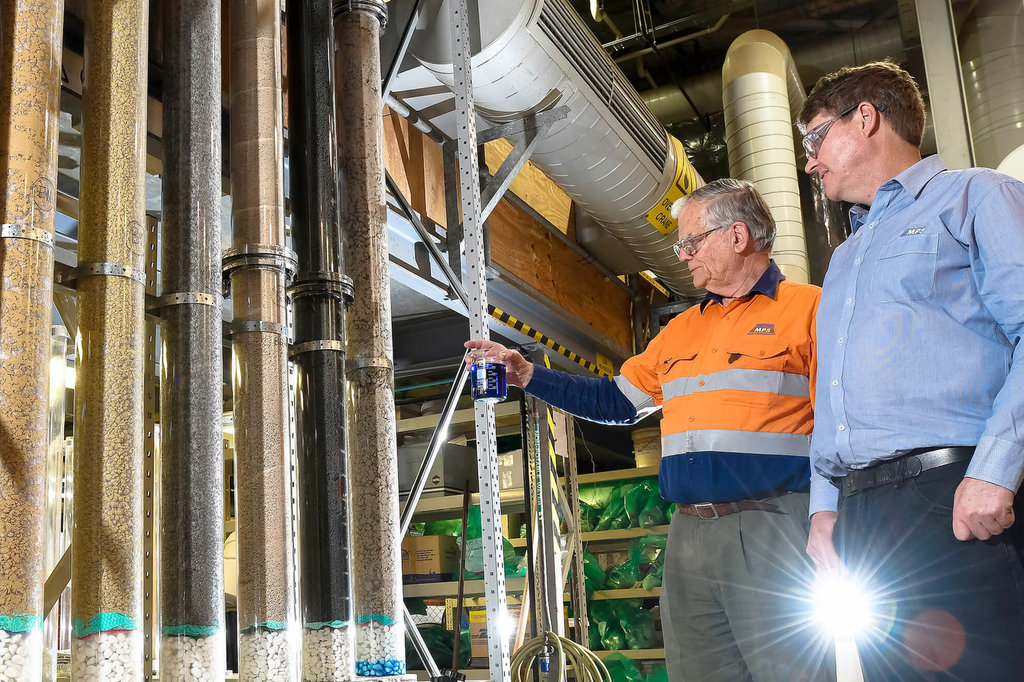The big interview
Cyanide to glycine: The chemical technology removing poisons from mines
Ashima Sharma speaks to Jackson Briggs, the senior product manager of leaching technologies at Draslovka, on the impact and scalability of glycine leaching in precious metal mining.

Jackson Briggs. Credit: Draslovka
When the tailings dam broke at the Aurul gold processing plant in Romania, it released 100,000 cubic metres of cyanide-contaminated water into the Somes, Tisza and Danube rivers. In Hungary, over 2.5 million people were left with poisoned drinking water and the Somes river showed cyanide concentrations of over 700 times the permitted level. Affecting people and marine life, the repercussions were far reaching and enough to stir alarm in the industry.
In response to this incident on 30 January 2000, the International Cyanide Management Code (ICMC) was created. Many companies have signed up to the code, a voluntary framework that all major gold mines use to help regulate their use, handling and disposal of sodium cyanide.
According to the ICMC, the concentration of cyanide used in commercial gold extraction ranges between 0.01% and 0.05%, and no harm has been indicated in such concentrations for over a hundred years. Spills or accidents of cyanide poisoning generally occur when companies fail to comply to regulatory standards, or disregard operational safety around tailings dams.
Draslovka, a Czech company and the world’s largest producer of sodium cyanide, became one of the founding members of the International Cyanide Management Institute, which developed the cyanide code. Now, a new technology is helping miners cut the use of cyanide in about half. Jackson Briggs, the senior product manager for leaching technologies at Draslovka, says, “we saw it as a logical next step in terms of the industry improving the value that it can create.”
Ashima Sharma: How can new leaching technology enable substitution of cyanide?
Jackson Briggs: It is called the glycine leaching technology (GLT) and it was inspired by nature. Over a decade ago, there was some researchers at Curtin University in Perth, Australia, who observed that plants were absorbing gold and other metals out of the soil. They found that it was happening because of the presence of glycine.
Glycine is an amino acid, and it was responsible for carrying those metals up through the soil and into the plant. So they started researching if this could be applied to a larger industrial scale.
It's been in development for a little bit over a decade at Curtin University and then through MPS, which was the company that Draslovka acquired last year.
Ashima Sharma: What are the chemical properties of glycine and does it have any after-effects on the environment or the people using it?
Jackson Briggs: Glycine is really interesting as a leaching reagent. It's non-toxic, so it's actually edible. It's used as a nutritional supplement for both humans and animals, but it has two characteristics that make it really attractive as a leaching agent.
One is that it's highly selective in terms of what it bonds with. Glycine bonds with target metals in mining operations, so with gold, silver, nickel, copper and in some cases also the platinum group metals. It doesn't bond with gang metals like iron, mercury and arsenic. Those are essentially just the metals that you're not wanting to extract in the process. Those also happen to be ones that can cause environmental liabilities or will lead to environmental liabilities.

Waste cyanide at an Australian leaching plant. Credit: Carla Gottgens/Bloomberg via Getty Images
So compared to cyanide which is a very effective leaching agent that leeches gold well, but also leeches other metals out, glycine is more selective. So it is a selective leaching reagent and is also recyclable.
Once the glycine reacts with the metals and separates them, it remains intact. So as long as you're recirculating or recycling your processed water, the glycine can be reused throughout the process. It is a much more efficient and sustainable approach to leaching metals, in addition to having really significant cost benefits, because you're not consuming acids or cyanide constantly. You're using a reagent that can be recycled.
Ashima Sharma: In terms of development, where does the glycine leaching technology stand today?
Jackson Briggs: Currently we are at slightly different steps in different applications. We are the most advanced in gold extraction, because that’s where the research in Curtin started. Right now we have a global testing and implementation agreement with Barrick Gold, the second largest gold producer in the world. They are testing at several sites and adding more as time passes, and we've seen really positive results from early testing with them.
We've had one small operation in the past that operated for a year and a half continuously with the technology. So that was our proof of concept that glycine leaching can be used on a continuous basis over a long period of time.
As part of the FBICRC consortium of mining industry players, universities and the government in Australia, we have been doing some really interesting work on leaching nickel and cobalt from nickel tailings.
Nickel is usually only recovered at a rate of about 60% from nickel sulphides and we've shown so far that we're able to recover about 80% of the nickel that's left behind in tailings. In the next month, we're going to be launching a pilot in Australia, showing that technologies viability at a larger scale.
We're doing work on copper as well. We did a large scale pilot heap leach at a copper site earlier in the year. The application in copper is interesting, because copper uses sulfuric acid as a leaching reagent. Glycine can have a similar benefit in copper extraction where it can reduce the amount of sulphuric acid that is consumed in the leaching process. We're able to take copper deposits that would not have been economically viable projects and then use glycine, which is safer and more sustainable leaching reagent. It improves the operating costs at those deposits and turns them into viable viable mining operations.
Ashima Sharma: How is glycine incorporated as part of the extraction operations at the mining sites? Does it require a separate infrastructure? Is it used as an amalgam or an additive?
Jackson Briggs: So the way cyanide is dosed into the leaching circuit is that you have a cyanide solution, a storage tank, a pipe that connects it to the process and a pump that pumps the solution in. Here instead, you would have a a glycine tank with piping and a pump that pumps into the circuit. Glycine is just another additive in the leaching solution. It does not require anything different than what a lot of operations already do, where they add other things to the cyanide solution in order to get the chemistry right for gold recovery. There's no novel process or equipment required, hence, no significant capital expenditure or infrastructural set-up.

Columns of leaching materials in situ. Credit: Draslovka
That makes glycine leeching the only economical leeching approach, because typically a big part of your calculation is how much reagent are you using per gram or per ounce of recoverable metal. When you're recycling that reagent, it changes the equation entirely, and so that's why we're really excited about the potential in nickel tailings as an example, where the nickel grade in the tailings may be low, but because we're able to recycle the reagent, the operating costs are still very attractive for extracting that nickel.
Ashima Sharma: How does the distribution of the technology work?
Jackson Briggs: We licence the technology to the operating mines. We have a testing process that we go through, where we start with small scale tests and work our way up into piloting and then into full production. The testing process takes approximately 12 months.
Once the mine sees the benefits and they're comfortable with implementing it, then we licence the technology to them for use.
Ashima Sharma: What are the challenges in terms of the industry adapting to glycine leaching?
Jackson Briggs: The biggest hurdles will be just that it's a new technology and we have an entire mining industry that's trained on using cyanide. Cyanidation is a well known process and it has been used for over 100 years. We're coming in with a new chemical approach and we're really re-training the industry to use an approach that's more efficient and sustainable. That training, along with adapting to a new technology, can take time.
It is worth mentioning that finding new deposits is getting harder and harder, and if we want to achieve the the energy transition, we're gonna need to mine more cobalt and copper. It is difficult and expensive to find, develop and get permits for new assets.
With the GLT, we can have a greater social licence to operate, be able to extend the life of mines that are already in production, and already have the right permits; it is a game changer.
Then, with the majority of the the processes that it needs, you have a much more sustainable source of metal sitting in waste material that you can produce from and you know, rather than having to open a new mine and everything that entails. If you can produce metal more sustainably from waste, it seems like a no brainer.